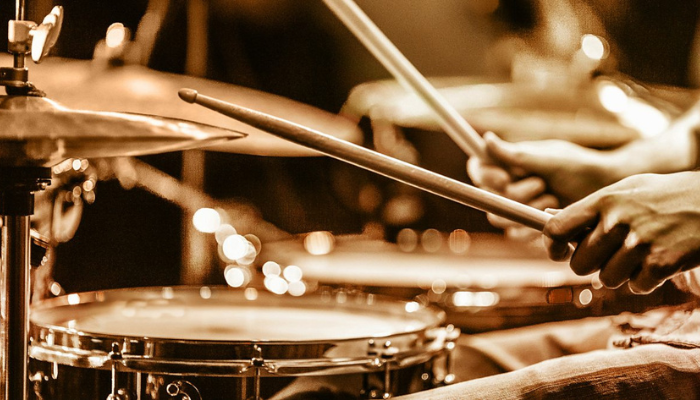From basic drum kits to exotic rain sticks or maracas, rhythmic percussion instruments energize music globally across cultures and genres. But do the terms percussion and drums indicate the same category? Or does subtle specificity distinguish them? While significantly overlapping, mild distinctions help differentiate the percussion family from its famous drum subgroup, as explored below. Let’s take a clearer picture of
percussion vs drums through this blog.
Also check: percussion drum set price
Percussion vs Drums: Understanding the Subtle Differences:
To understand the difference better, let’s look at them separately.
1. Defining Percussion Instruments:
By broad textbook definitions, percussion instruments produce sounds when physically struck, shaken, scraped, or otherwise manipulated by hands, beaters, sticks, or accessories. Most originally share inherent acoustic properties without electronic enhancements.
While countless varieties exist worldwide for every playing style, some percussion instrument families include metal (cymbals, steel pans, singing bowls), wood (marimba, xylophone, Cajon box), and skin (bongo, conga, djembe, tabla). Definitive traits also involve direct hand/stick contact with the instrument rather than indirect vibration of strings or air through valves.
2. Breaking Down the Drum Subcategory:
Drums live under the expansive percussion umbrella due to their physical strike-activation. Drums require cylindrical shells or hollow body chambers with skin membranes stretched across the otherwise open ends or edges.
Standard double-headed drums sandwich the shell between tunable batters up top and bottoms down below. Single-headed frame drums instead mount one skin over the opening on the frame. Snares add signature rattles via a nest of metal wires resting under the bottom drum head. Combined with complementary cymbals and accessories on shared mounting racks, complete drum sets provide familiar foundations for rhythmic drive and groove across endless musical genres.
However, not all percussion consists of drums, with the designation limited to instruments featuring this specialized body-plus-membrane format only. Even then, ambiguities emerge categorizing borderline instruments sharing both grouped and drum traits like certain Afro-Cuban conga-tumba hybrids or Asian steel tongue/shell combo drums. Regional context and musical tradition help distinguish these trickier cases.
Acoustic Properties: Percussion vs Drums:
Beyond textbook definitions, physics, and sound production provide further insight explaining why certain forms of percussion may be classified more loosely as “drums” while others remain distinctly categorized:
1. Sound Activation Method:
Most percussion directly contacts and impacts solid material surfaces for audio activation, while drum heads vibrate surrounding air columns trapped within resonant hollow body chambers instead. This air vibration creates signature reverberation and timbre.
2. Inherent Pitch Range:
Most traditional percussion maintains high, short-decay pitches owing to the dense metals, woods, or other stiff materials that their natural acoustic tones. Drums alternatively allow players to manipulate and alter pitch to preference through head tension tuning and more extensive modifications to shell dimensions, which significantly expands the tonal range into booming bass registers.
3. Play Style and Ergonomics:
Standard drum kit setups position diverse tunable tom-toms, snares, cymbals, and kick drums adjacent for rapid back-and-forth play between sources using looping stick motions and integrated kick pedals. Percus ion often involves more isolated separate instruments, limiting dynamic grooves and flowing play between components.
The technical distinctions between a broader percussion designation and specific drums remain somewhat vague, better differentiated through direct comparisons of familiar examples. Even ten, context, and intended musical role typically distinguish melodic drums from general short-decay percussion.
Conclusion:
Let’s conclude the discussion of Percussion vs Drums. While the percussion family tree and drum branch undoubtedly overlap significantly, drums still command specialized status from their hollow shell bodies and tunable skinheads, producing signature audio properties. Fortunately, there is no need to sweat blurry instrument subcategory names. Within musical compositions and ensembles, drum set components assume clear identities from other struck sound sources through their physics, ergonomics, and rhythmic purposes. Feel the innate vibes and get swept away, grooving to their primal beats!

